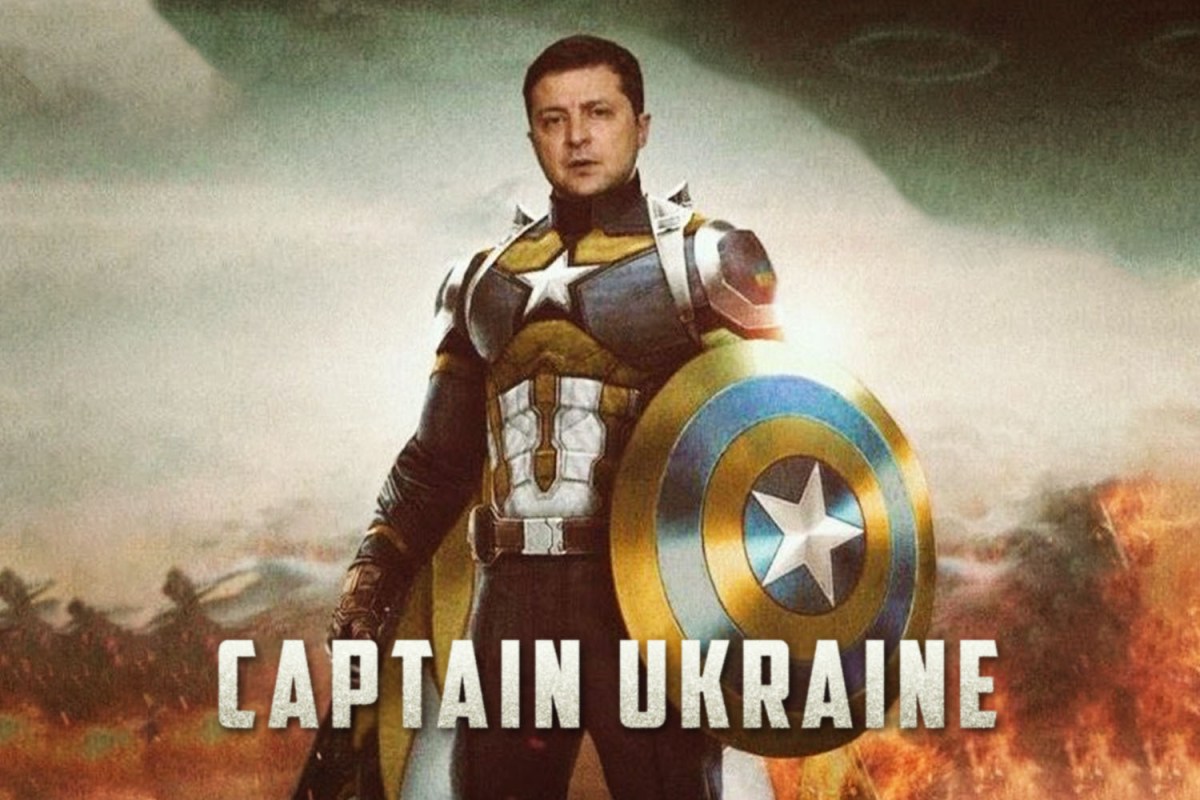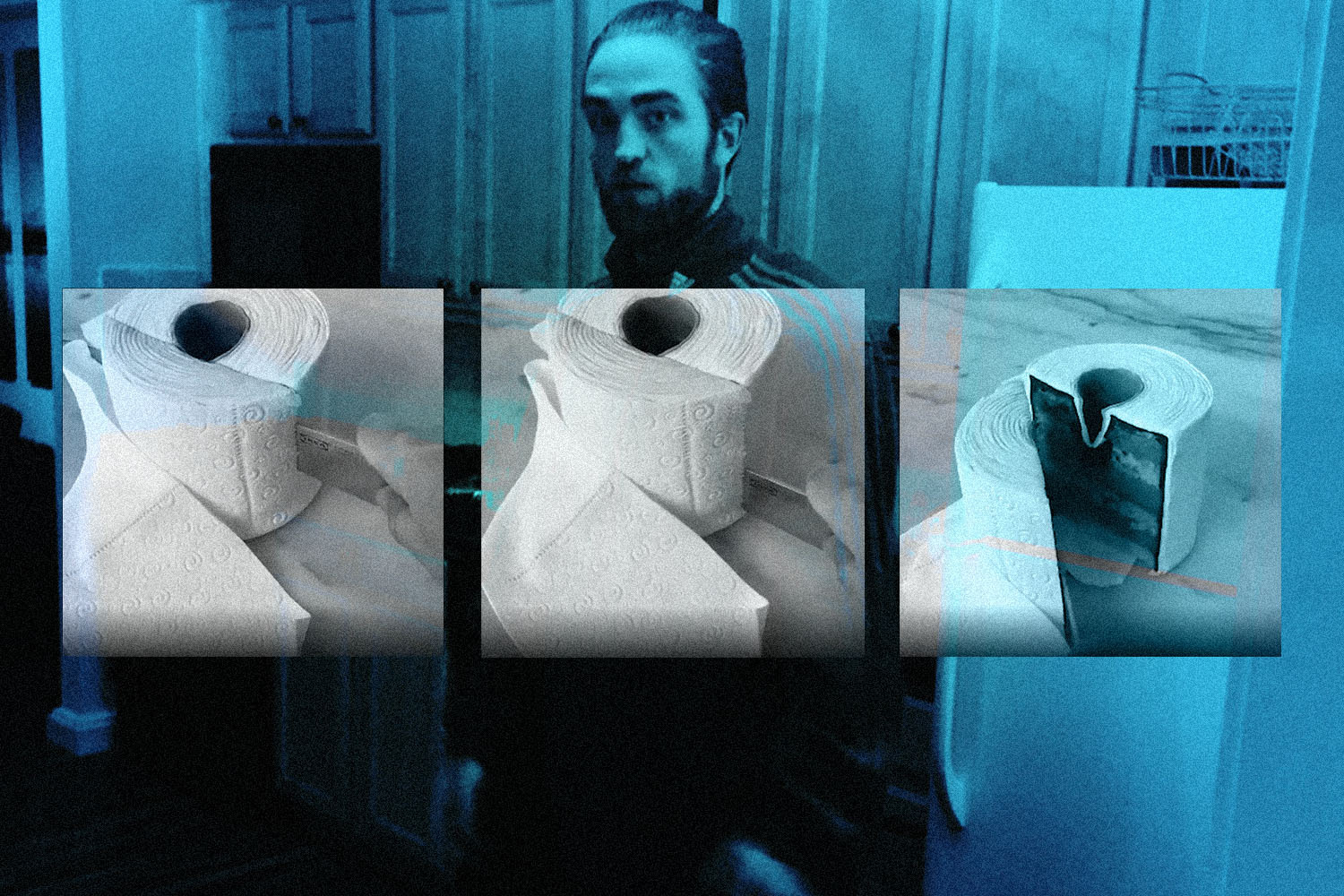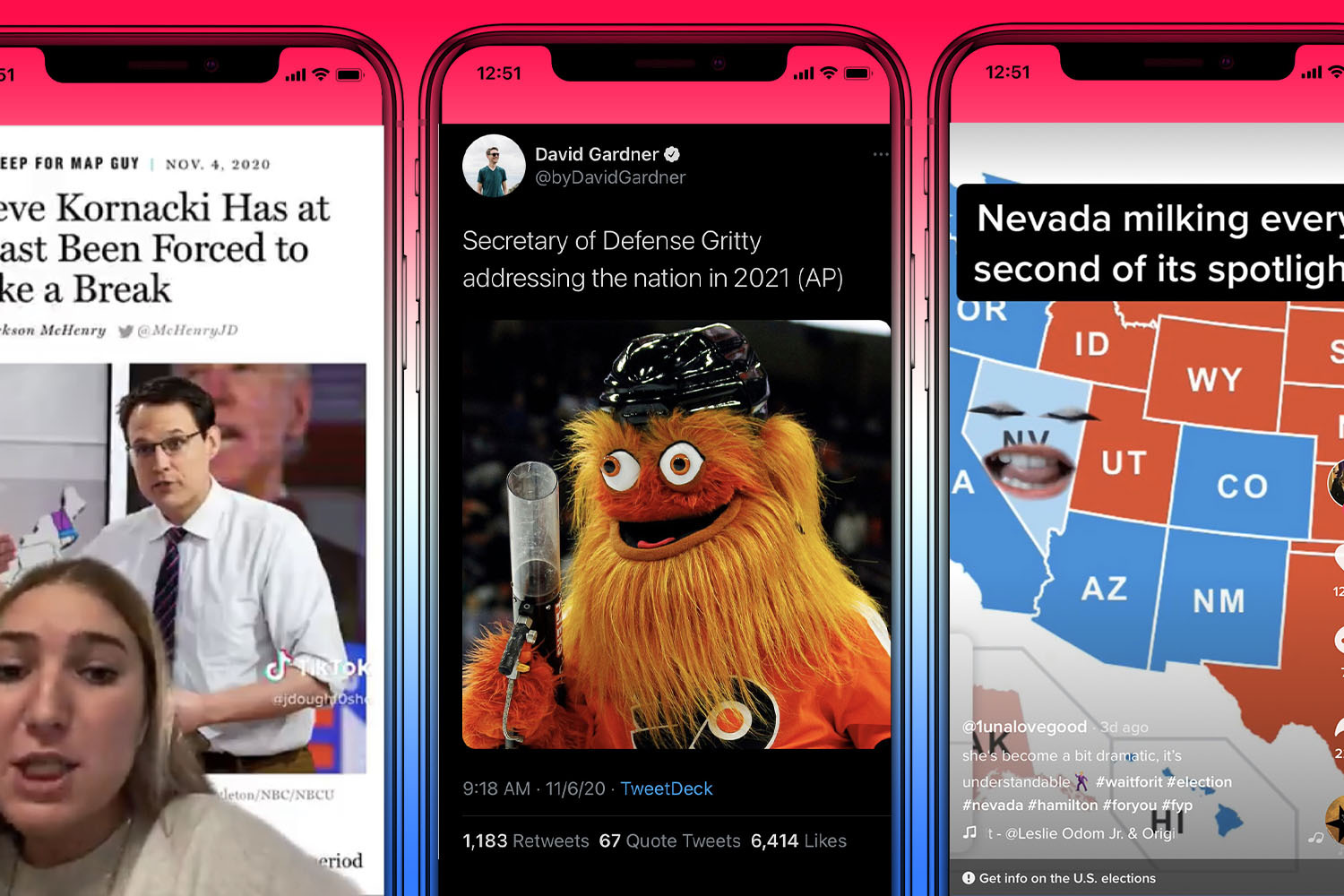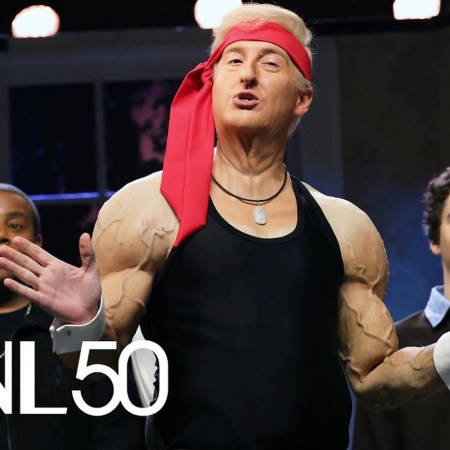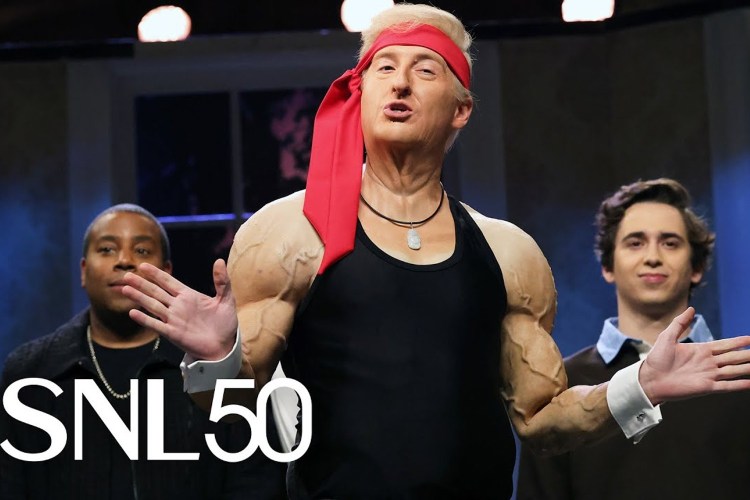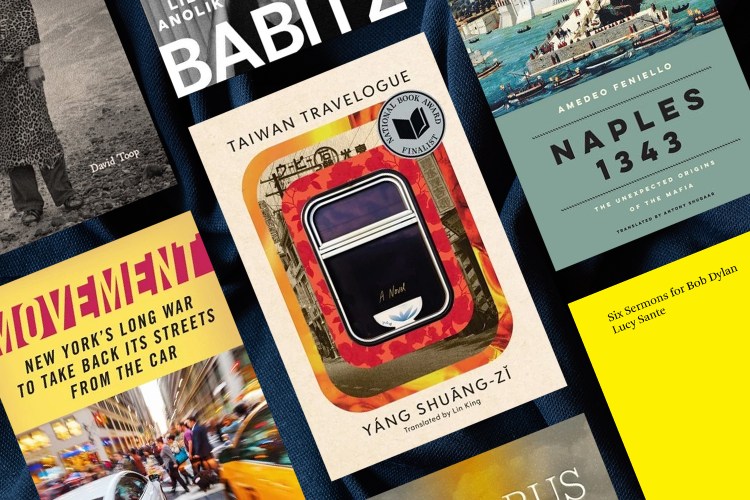At the end of January 2020, then President Donald Trump threatened military action on Iran. The threat of a potential World War III prompted the teens on TikTok to swap draft-dodging tips and joke about how terrible they’d fare in conflict. It was largely perceived by internet users, experts and media outlets (including us) as a way of channeling the very real anxiety about the possibility of war into some comedic relief. It’s what memes do.
When bombs started dropping on Ukraine last Sunday, online reactions to the Russian-Ukrainian conflict and the prospect of a WW3 followed almost immediately, and have continued to flood nearly every social feed since.
“I’m tired of living through historic events” was a popular online response to the ensuing brutal conflict. Memes about Gen Z theoretically fighting in battle, many regurgitated from 2020, made the rounds. Now, we’re seeing an influx of Marvel-related memes: the epic final battle in Avengers: Endgame has been edited countless times to depict the scene as a Russia vs. Ukraine/NATO standoff, while Ukrainian President Volodymyr Zelensky has been photoshopped onto Chris Evans’s Captain America and given the title “Captain Ukraine.” The conflict is being equated to other fictional series like Star Wars and Lord of the Rings as well, and people are even making fancams of the Ukrainian President, who has become somewhat of a media darling and wartime heartthrob.
Joking our way through a crisis is nothing new, notes Dr. Jamie Cohen, an assistant professor at Queens College who teaches media studies, social media and digital activism. The only difference, really, is the preferred medium through which we’re funneling our anxiety: memes.
“Right after 9/11, I remember standing outside on the day of the attack and a kid next to me said, ‘I’ll see you in the 157th Regiment.’ I don’t know what that means, but immediately there was this ironic thought of, ‘This is it, we’re going to war, and that thought of being drafted I think is this hyper-anxiety of most people,’” Cohen tells InsideHook. “There’s not a place to put a lot of our anxiety, so memes act as a place to export anxiety or emotions. In this current context, they act as a coping mechanism. We attribute that [need to cope] to being down or feeling lost.”
Amanda Brennan, a senior director of trends at XX Artists and who is commonly referred to as the meme librarian, tells InsideHook that she sees millennials and Gen Zers, in particular, using memes as a coping tool.
“We learned how to cope with hard situations through memes. There are so many instances of people using memes as a way to be vulnerable with each other, as a way to not really talk about the hard stuff. Just use meme in place of that,” she explains.
In addition to the 2020 WW3 memes, we’ve seen meme-sharing used a a coping mechanism throughout the COVID-19 pandemic and the 2020 presidential election, two events that engendered anxiety on a mass scale and then a slew of — mostly chaotic — memes to help placate it.
This time around, though, the memes aren’t hitting as hard. The draft jokes, Avengers-inspired Twitter threads and other supposedly humorous or relatable content the invasion of Ukraine has spawned feel out of touch, if not downright insensitive.
The difference, according to Cohen, is one of an existential threat versus an actual threat. Unlike the tension between Iran and the U.S. in early 2020, the conflict with Russia and Ukraine has actually transpired.
“People are witnessing, in a very immediate sense, people’s houses being burned, bodies being blown out of vehicles … It is not one of those things where it’s like a threat: ‘Oh, we might do this.’ Or, ‘Oh, ha-ha, Trump said something that’ll send us to war.’ We’re actually witnessing it with our own eyes. This is what war looks like mediated through our current media.”
Of course, the COVID-19 pandemic was and still remains a major threat. However, it was a shared experience by everyone on the planet. When Americans erect Instagram war pages or post “relatable” remarks about living through historic events from behind their screens in the U.S. — which is under no imminent threat at the moment — in exchange for Twitter likes, it all starts to feel a bit tone-deaf.
The majority of people who are making and sharing these types of memes aren’t necessarily doing so because they lack empathy toward human suffering. Both Brennan and Cohen mention that part of the reason we make and share memes in times of crisis, or feel an incessant need to comment on a serious issue we really know nothing about, is because we want to feel a part of something, and contribute to the thing everyone is talking about.
“Especially right now, with the scale of the conversation, people just want to feel like they’re participating,” says Brennan. Social media platforms and the algorithms they employ are — shockingly — at the crux of the issue.
“Platforms identify volume in conversation, but they don’t identify the sentiment of it. It’s why all the bad stuff has volume and engagement. That will get identified by platforms as like, ‘Oh, there’s so much discussion of this. So yes, let’s push it to more users. Let’s show it to more algorithms,”’ Brennan explains.
You might be familiar with Twitter’s “Main Character” of the day, aka a person who goes unintentionally viral and becomes the thing everyone on Twitter obsesses over for approximately 24 hours, until the app moves onto the next unfortunate soul.
“I think what is happening here is the war is the main character. It doesn’t feel good to say that, but it is how platforms are built. They’re built to have this large conversation that everyone’s talking about,” adds Brennan.
Writer Hussein Kesvani diagnosed what we’re witnessing online right now succinctly in a recent tweet: “memeification, the marvel-isation, the spectacle of an ongoing war rendered as entertainment etc. This is less about a lack of empathy or understanding of human suffering, and far more indicative of platforms doing what they were designed to do in producing everything as content.”
This memeification of any subject, no matter how grim, is a byproduct of living in an era in which everything is commodified, argues Cohen. And in this vast commodification, people will default to the means of communication and connection they know best — e.g., meme-making — without realizing that they’ve been trained by social media platforms to operate this way.
“Social media upholds a vacuum. It needs people to post,” he adds. “So we’re fulfilling that vacuum, even though it might not feel appropriate or even be appropriate in this certain context.
The internet has also trained us to talk about serious, heavy topics like war simultaneously with lighter fare like superhero movies. “I think this is a double-edged sword, because it lets us talk about multitudes, but that’s also how we end up with Marvel World War III memes,” says Brennan. “It’s second nature to just say all these things together. And it’s something that I don’t think has an answer right now to, like, ‘Where do we go from here?’”
Perhaps we can start by staying mindful of the ways in which social media platforms and their algorithms work to keep us engaged, and maybe even entertain the practice of unplugging, especially in moments when we feel overwhelmed due to the glut of war content we’e consuming. No one needs your take on nuclear war that bad, promise.
This article was featured in the InsideHook newsletter. Sign up now.
